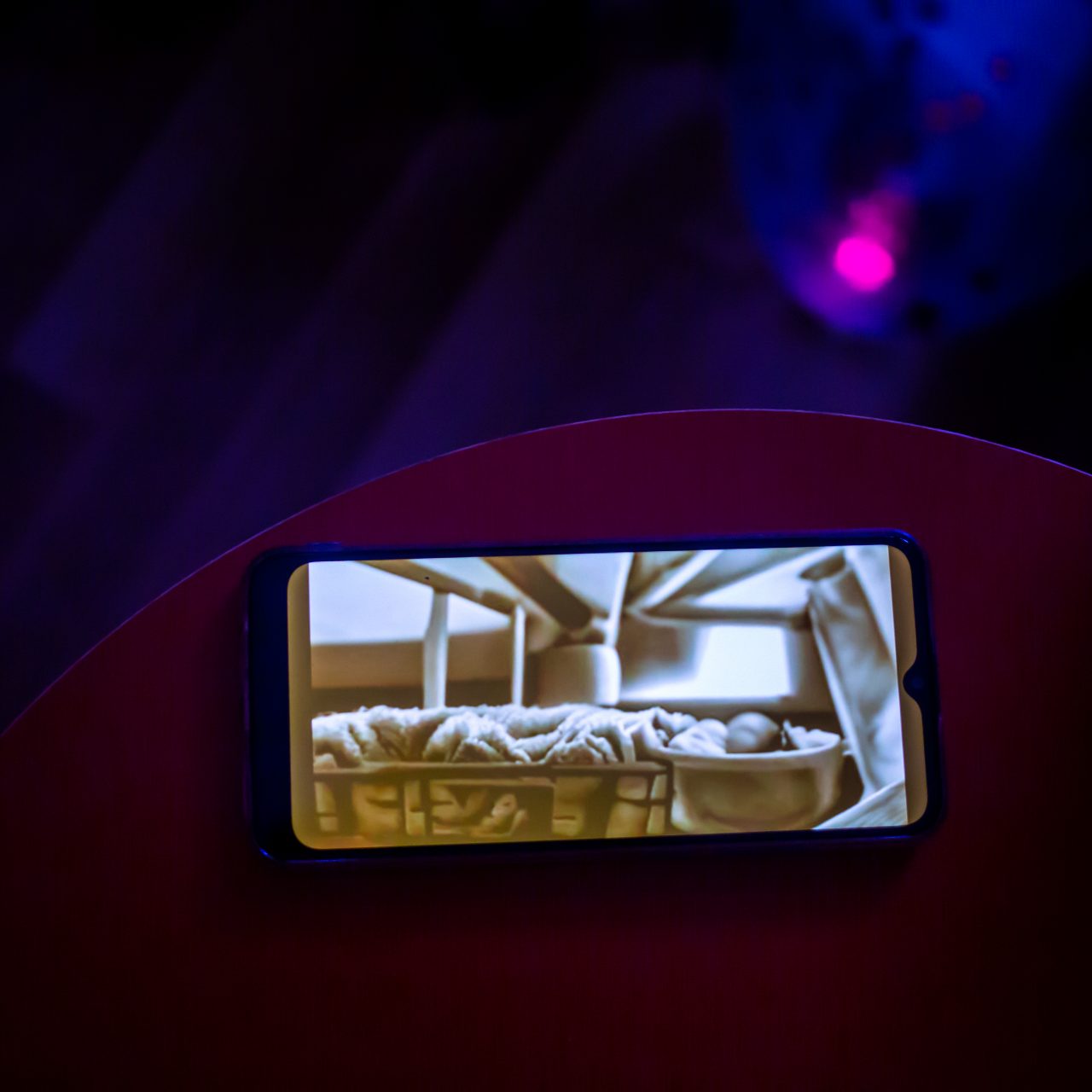(◕‿◕✿)
The simulation of trust
Many new parents seek ways to juggle care for their newborn children with other practical aspects of life. A device recording and transmitting live sound and video of the child’s crib to a smartphone, sometimes also called the video nanny, has become a tool for bringing certain physical autonomy to the parent and child, while being constantly online, ready to respond to sudden needs.
Pre-pandemic statistics speaking, 47% of all vulnerable devices on home networks are cameras [12]. Mothers reported movements of the cameras autonomous from the smartphone management, which points to another user than the caretakers. [13] The gain of such privacy breach for the perpetrators or voyeurs, besides observing the family’s life or rhythms, may be more directed to the theft of physical assets or confidential online data through Wi-Fi, such as passwords or banking information. However, on the wave of data, one might get to fundamental phenomenons. The accidental mistuning of the signal of a video nanny to another household than one’s own helped to discover and inspect the Kuřim scandal in 2008, one of the most appalling cases of child abuse in the Czech Republic known to date. [14]
[12] https://review42.com/resources/hacking-statistics/
Simulácia dôvery
Mnoho čerstvých rodičov hľadá spôsoby, ako skĺbiť starostlivosť o svoje novonarodené deti s inými praktickými aspektmi života. Zariadenie nahrávajúce a prenášajúce živý zvuk a video z detskej postieľky do smartfónu, zvané aj video-pestúnka, sa stalo nástrojom, ktorý rodičom a dieťaťu prinesie určitú fyzickú autonómiu, pričom je rodič neustále online, pripravený reagovať na náhle potreby dieťatka.
Z predpandemických štatistík vyplýva, že 47 % z najzraniteľnejších zariadení v domácich sieťach tvoria kamery [12]. Matky hlásili pohyby kamier, ktoré sa diali nezávisle od ovládania smartfónom, čo naznačuje ovládanie zariadenia iným používateľom. [13] Zisk z takéhoto narušenia súkromia pre zločincov či pedofilov môže byť okrem sledovania rodinného života skôr zameraný na krádeže fyzického majetku alebo dôverných online údajov cez Wi-Fi, ako sú napr. heslá alebo bankové informácie. Na vlne dát sa však môžeme dostať k zásadným skutočnostiam. Náhodné preladenie signálu video-pestúnky do inej domácnosti pomohlo v roku 2008 odhaliť a vyšetriť Kuřimský škandál, jeden z doposiaľ najotrasnejších prípadov týrania detí v Českej republike. [14]

